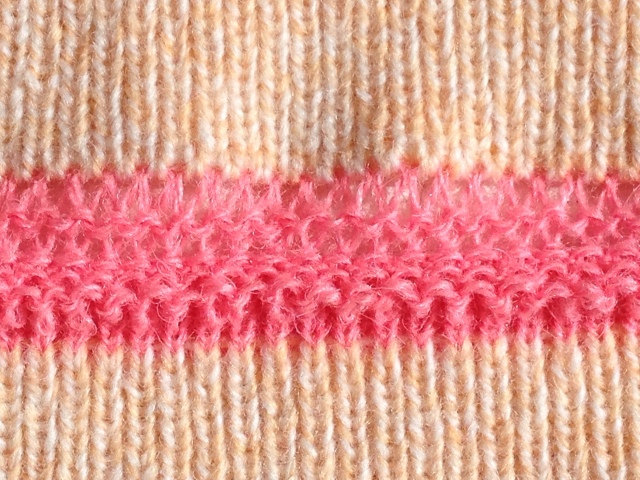This edge is so neat. It takes a few practises to get the method right, but once you have done this, you will always cast on in this way.
The method is worked on a double bed machine, and involves casting on in waste yarn using a cast on comb. After a little bit of knitting in waste, rows are knitted on the front bed only, whilst the back bed (or main bed) holds its stitches without knitting. Next, the front bed stitches are dropped, creating a roll of single bed knitting. However the back bed stitches hold the knitting on the machine. A loose tension row is created by knitting a row on all the needles, and then dropping the front stitches once again, this is the ‘drawthread’ or ‘separation row’ that will be removed later on to release the new edge you are about to knit.
A new cast on is worked through this loose row. Because these loose stitches are hanging on the back needles, the first, zig-zag row of the cast on does not need to be weighted down with a comb, the stitches do this instead. So no comb – no stretched and frilly edge stitches. Magic.

Once the zig-zag row is worked, the edge is completed as normal, with circular rows, and then your chosen edging, which might be all needles rib, or a tubular welt. You can transfer stitches into a faux rib as well.
This works just as well for 1×1 and 2×2 ribs. Just work with the needles set up from the start, and observe the racking rules for the rib you are working.
1
The first advantage is that the edge stitches are not distorted by the wire in the cast on comb, so the edge won’t ‘frill’ or be stretched. They sit in a lovely, ordered row, like little soldiers on parade.
2
The second great thing is that by using this method of casting on you can go straight into a new sample without having to cast on again with the comb. This does mean that the first sample has to be knitted off in waste yarn, and not cast off, but thats often not a problem if you are doing multiple samples.

I have included a pdf of how to work the cast on that you can view by clicking here. Don’t be put off by it having been photographed on an industrial hand machine, it is worked just the same on a domestic double bed machine.
